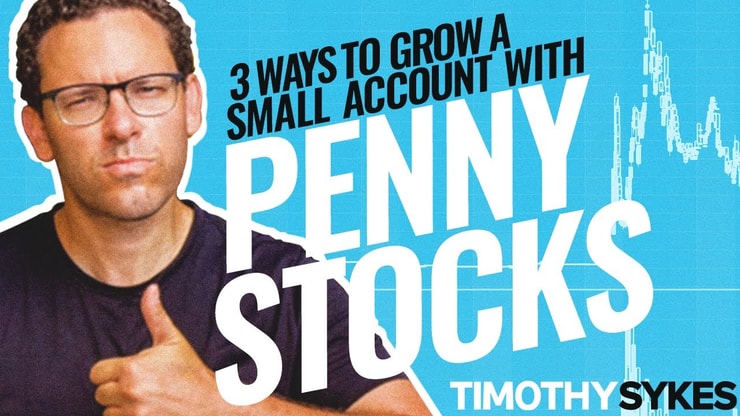Day trading with less than $25k is not only possible, it’s a reality for many traders. The key is understanding the rules and regulations that govern this type of trading. The Financial Industry Regulatory Authority (FINRA) has specific rules for day traders, particularly those classified as Pattern Day Traders. But if you’re trading with a cash account, these rules don’t apply, and you can trade freely as long as you have the funds to deposit to cover your trades.
Trading with less than $25k comes with its own challenges. You’ll need to carefully manage your funds, ensure you have enough to cover your trades, and be mindful of the risks involved. Day trading is a high-risk activity, and it’s possible to lose more than you invest. But with careful planning, a solid strategy, and a good understanding of the markets, you can make it work.
Let’s dive into the world of day trading, the rules, and how to navigate them with less than $25k.
Table of Contents
- 1 What Is Day Trading?
- 2 What Are the Rules for Day Trading With Less Than $25,000?
- 3 Pattern Day Trader Rules and Requirements
- 4 Margin Accounts and Buying Power Requirements for Non-Pattern Day Traders
- 5 Equity Requirement Rules for Non-Pattern Day Traders Under $25,000
- 6 Risk Tolerance and Position Size Restrictions for Non-Pattern Day Traders Under $25,000
- 7 Day Trading in Different Markets
- 8 Why Do You Need 25k To Day Trade?
- 9 Key Takeaways
- 10 Day Trading Under 25k FAQs
What Is Day Trading?

2025 Millionaire Media, LLCDay trading is all about making quick moves. It’s buying and selling stocks within a single trading day. The goal? To profit from short-term price fluctuations. It’s not for the faint-hearted. It requires a keen eye, quick decision-making skills, and a solid understanding of the markets. But with the right strategy and risk management, it can be a profitable venture.
Day trading is a dynamic field that requires a solid foundation of knowledge. It’s not just about buying and selling stocks within a single trading day, but understanding the intricacies of the market. To get a comprehensive understanding of day trading, you might want to explore more about the basics of day trading. This will equip you with the necessary tools to navigate the market effectively. Remember, the more you know, the better your chances of making profitable trades.
What Are the Rules for Day Trading With Less Than $25,000?
The Financial Industry Regulatory Authority (FINRA) sets the rules for day trading in the U.S. One key rule is the Pattern Day Trader (PDT) rule. This rule states that if you make four or more day trades within five business days, and these trades make up more than 6% of your total trading activity, you’re a Pattern Day Trader.
It’s essential to follow the day trading rules under $25k to navigate the market successfully and avoid regulatory pitfalls.
But what if you have less than $25k? Well, the PDT rule applies to margin accounts, not cash accounts. So, if you’re trading with a cash account, you can make as many day trades as you want, as long as you have the funds to cover them. But remember, each trade comes with its own risks.
These rules apply to all brokers.
Pattern Day Trader Rules and Requirements
The Pattern Day Trader (PDT) rule requires traders making four or more day trades in five business days to hold $25,000 in margin account equity. This equity may include cash or securities. Falling below this balance blocks further trades until replenished. The rule limits leverage risks, ensuring traders manage accounts responsibly to avoid restrictions.
Abiding by the day trading restrictions for accounts under $25k is crucial, especially if you’re close to being classified as a Pattern Day Trader.
Being a Pattern Day Trader comes with its advantages, such as access to more leverage. This means you can borrow more money from your broker to make trades, potentially increasing your profits. However, it also comes with increased risks and restrictions, so it’s important to understand what it means to be a Pattern Day Trader and to trade accordingly.
If you’re starting with a smaller account, check out our guide on small account trading. It provides insights on how to maximize your trades with a smaller starting capital.
What Is a Pattern Day Trader?
A Pattern Day Trader is a trader who makes four or more day trades within five business days. But there’s a catch. These trades must make up more than 6% of the trader’s total trading activity in that same period. If you meet these criteria, you’re a Pattern Day Trader, and different rules apply to you.
Complying with the regulations for day trading with less than $25k ensures that you can continue trading without facing unexpected account limitations.
How To Determine If You Are a Pattern Day Trader
Determining if you’re a Pattern Day Trader is straightforward. Just count your day trades. If you’ve made four or more in five business days, and they make up more than 6% of your total trades, you’re a Pattern Day Trader. But remember, this only applies if you’re trading with a margin account.
More Breaking News
- Will FTAI Aviation’s Future Take Flight?
- Neurocrine Biosciences: Climbing the Peak, Is More Growth Expected?
- BioCryst Pharmaceuticals: Is It Time to Dive In?
What Are the Restrictions for Pattern Day Traders?
Pattern Day Traders face certain restrictions. One of the main ones is the $25k rule. This rule states that Pattern Day Traders must maintain a minimum equity of $25k in their accounts on any day that they trade. If the account balance falls below this, the trader will not be able to day trade until the minimum equity level is restored.
What Are the Benefits of Being a Pattern Day Trader?
Being a Pattern Day Trader isn’t all restrictions and rules. There are benefits too. For one, Pattern Day Traders have access to more leverage than non-pattern day traders. This means they can borrow more money from their broker to make trades, potentially increasing their profits. But remember, leverage also increases risk.
Margin Accounts and Buying Power Requirements for Non-Pattern Day Traders

2025 Millionaire Media, LLCA margin account is a type of trading account that allows you to borrow money from your broker to purchase securities. This borrowed money increases your buying power, allowing you to make larger trades than you could with just your own funds. However, trading on margin also increases your risk, as you could lose more than your initial investment.
Observing the limitations of day trading with a small account is key to managing your trades effectively and avoiding over-leveraging.
For non-pattern day traders with less than $25k, the buying power is limited to the amount of cash available in the account. This means you can only trade with the money you have, not the money you borrow. While this limits your potential profits, it also limits your potential losses, making it a safer option for those with less capital.
To understand which is right for you, it’s crucial to understand the ins and outs of day trading. Our comprehensive guide on day trading can provide you with the necessary knowledge to navigate this landscape.
What Is a Margin Account?
A margin account is a type of trading account that allows you to borrow money from your broker to purchase securities. This borrowed money increases your buying power, allowing you to make larger trades than you could with just your own funds. But remember, trading on margin also increases your risk.
How Does Buying Power Work in a Margin Account?
Buying power refers to the total amount of money available in your margin account to purchase securities. It includes both your own funds and the money borrowed from your broker. The more buying power you have, the larger the trades you can make. But remember, larger trades also mean larger potential losses.
What Are the Buying Power Requirements for Non-Pattern Day Traders Under $25,000?
For non-pattern day traders with less than $25k, the buying power is limited to the amount of cash available in the account. This means you can only trade with the money you have, not the money you borrow. This limits your potential profits, but it also limits your potential losses.
Equity Requirement Rules for Non-Pattern Day Traders Under $25,000
The equity requirement for non-pattern day traders under $25k is simple: it’s the amount of cash in your account. You can’t borrow money to trade, so your equity is just your cash. This means you need to carefully manage your funds and make sure you have enough to cover your trades.
Sticking to the guidelines for day trading with under $25k helps in maintaining a balanced approach to trading and managing risks.
Managing your equity effectively is crucial to successful day trading. It involves not only ensuring you have enough funds to cover your trades but also managing your risk and protecting your capital. This means setting stop-loss orders to limit potential losses, diversifying your trades to spread risk, and only investing money that you can afford to lose.
How To Calculate Equity Requirement Rules for Non-Pattern Day Traders Under $25,000
Calculating the equity requirement for non-pattern day traders under $25k is simple. It’s just the amount of cash in your account. You can’t borrow money to trade, so your equity is just your cash. This means you need to carefully manage your funds and make sure you have enough to cover your trades.
Risk Tolerance and Position Size Restrictions for Non-Pattern Day Traders Under $25,000

2025 Millionaire Media, LLCRisk tolerance is a crucial factor in day trading. It’s about how much risk you’re willing to take on in pursuit of profit. To determine your risk tolerance, consider your financial situation, your investment goals, and your comfort level with potential losses.
Implementing the required actions as per day trading rules under $25k is vital to align your trading strategy with your financial capabilities. Remember, day trading is risky, and it’s possible to lose more than you invest.
Position size is another important factor. This refers to the number of shares or contracts you buy in a trade. For non-pattern day traders with less than $25k, position size is limited by the amount of cash available in the account. This means you need to carefully consider each trade and ensure you have enough funds to cover it. Remember, larger positions can lead to larger profits, but they can also lead to larger losses.
How To Determine Your Risk Tolerance as a Non-Pattern Day Trader?
Risk tolerance is a personal thing. It’s about how much risk you’re willing to take on in pursuit of profit. To determine your risk tolerance, consider your financial situation, your investment goals, and your comfort level with potential losses. Remember, day trading is risky, and it’s possible to lose more than you invest.
Day Trading in Different Markets
Day trading isn’t limited to the stock market. You can also day trade in other markets, such as forex, futures, and options. Each of these markets has its own characteristics and requires a different approach. For example, forex is a 24-hour market, which means you can trade at any time of the day or night. This can be a big advantage for day traders.
Enforcing the necessary measures to adhere to the account size limitations is crucial, regardless of whether you’re trading stocks, forex, futures, or options. Futures contracts are highly leveraged, which means they can lead to large profits but also large losses. Options, on the other hand, give you the right to buy or sell a security at a specific price, but they can also expire worthless if the price doesn’t move in your favor. It’s important to understand these risks and to have a solid strategy in place before you start trading in these markets.
Forex
Forex, or foreign exchange, is a market where you can trade currencies. It’s a 24-hour market, which means you can trade at any time of the day or night. This flexibility can be a big advantage for day traders.
When trading in the forex market, it’s important to apply the day trading rules specific to accounts under $25k to maximize your trading opportunities. But remember, forex trading involves a high level of risk and isn’t suitable for all investors.
Futures
Futures are contracts to buy or sell a specific asset at a specific price on a specific date. They’re a popular choice for day traders because of their high leverage and liquidity.
Practicing the prescribed strategies for day trading with a small account is especially important in the futures market, where leverage can significantly amplify risks.
Options
Options are contracts that give you the right, but not the obligation, to buy or sell a security at a specific price before a specific date. They’re a popular choice for day traders because they offer a way to hedge against risk and generate income.
Maintaining compliance with the day trading rules for accounts under $25k is essential for effective risk management in options.
Why Do You Need 25k To Day Trade?
The $25k requirement for day trading is a rule set by FINRA. It’s designed to protect investors from the risks of day trading. By requiring a minimum equity of $25k, FINRA ensures that investors have enough capital to absorb potential losses. But remember, even with $25k, day trading is still a high-risk activity.
Key Takeaways

2025 Millionaire Media, LLCDay trading with less than $25k is possible, but it comes with its own set of rules and restrictions. Understanding these rules is key to navigating the day trading landscape successfully. Remember, day trading is a high-risk activity, and it’s important to manage your risk carefully.
The regulations and margin requirements around trading with less than a $25k cushion is just one part of what you should learn as part of your trading education!
Trading isn’t rocket science. It’s a skill you build and work on like any other. Trading has changed my life, and I think this way of life should be open to more people…
I’ve built my Trading Challenge to pass on the things I had to learn for myself. It’s the kind of community that I wish I had when I was starting out.
We don’t accept everyone. If you’re up for the challenge — I want to hear from you.
Apply to the Trading Challenge here.
Trading is a battlefield. The more knowledge you have, the better prepared you’ll be.
Do you have less than $25k and want to experience pattern day trading? Let me know in the comments — I love hearing from my readers!
Day Trading Under 25k FAQs
What is the Best Trading Strategy for Small Accounts?
The best trading strategy for small accounts typically involves focusing on high-probability setups with careful risk management to avoid margin calls. It is crucial to educate oneself through courses and reliable information sources, enhancing the ability to identify favorable entry points and manage trades effectively.
For educational purposes, someone with a small account should prioritize learning and practice over immediate profits, gradually building their skills and account balance.
Where Can I Day Trade Without $25k?
You can day trade without $25k by using brokers that bypass the Pattern Day Trader (PDT) rule, applicable mainly in U.S. stock markets. Forex and futures markets offer lower entry barriers with different regulations. Alternatively, consider swing trading, which involves holding positions for longer than a single day.











Leave a reply